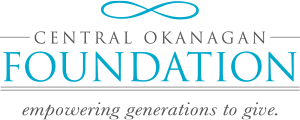GRANT WRITING: TIPS FOR SUCCESS
Common grant writing mistakes usually stem from inexperience with grant writing or a lack of resources, like time or research skills. Many grant writing mistakes also come from a lack of familiarity with the funder.
Below are some grant writing mistakes commonly made by nonprofits, and some grant writing tips to help you avoid them.
GENERIC PROPOSALS
One of the most critical aspects of writing a winning grant proposal is to tailor your grant to complement the goals of the granting agency. In other words, know your grantor! What is their mission? For what purposes are they providing grant funding? What results do they hope to foster? If you forge a strong connection between your mission and that of the granting agency, your proposal will have a greater chance of being funded.
NOT ENOUGH DETAIL
As an intimate member of your organization, your level of familiarity may actually be an obstacle. For one, you are already fully committed to your cause. Further, organization executives or staff may be so absorbed in the day-to-day business of fulfilling the group’s mission that it’s hard to step back and clearly and carefully explain the big picture. Certain details of your organization and mission will be so obvious and so familiar to you that you won’t even think to include them.
However, always remember that the people reading your grant may be hearing of your nonprofit for the first time. Even if you know the grantor, or have received funding from them before, you should still provide complete information about your nonprofit.
In the organizational information section, provide concise details on your organization including: Its history and mission statement; the recipients of your services; a description of your programs; an overview of your successes; and why the grantor can trust you to use funds responsibly and effectively.
Do not address targeted problems with broad solutions. Offer explicit details about the actions you will take to address the problem.
TOO MUCH DETAIL
While some areas will be lacking in information, inexperienced grant writers often include too much detail in other areas. While it’s important for your grant proposal to tell a compelling story, don’t get carried away with a lot of superfluous information.
In other words, don’t spend pages waxing eloquent about the problem or your ideals. Get to the point quickly and use concise, objective examples to illustrate your successes rather than vague or subjective anecdotes.
TOO MUCH EMPHASIS ON THE “WHY” NOT ENOUGH ON THE “HOW”
Of course, why your mission is important is important. But after stating the problems, your proposal must focus on presenting step-by-step solutions. You must approach the grant writing process like you’re a for-profit business. Your grant must include measurable objectives, and an explicit plan of action. Include what records or data you will collect, and how you will measure your program’s accomplishments. You may also be asked to provide a logic model.
POOR WRITING
The person reading your grant will probably have read many others that same day. This means reviewers will have little patience for bad writing. Make sure your proposal is reader-friendly, and that it tells a compelling story without being overly sentimental. Avoid jargon and buzzwords. Do say how the grant agency’s goals fit with your objectives, but never cut and paste phrases from their guidelines into your proposal. Write a clear, informative and engaging grant proposal that grantors will actually enjoy reading.
CIRCULAR REASONING
Circular reasoning is a veritable death sentence for grant proposals. Circular reasoning can be explained like this: When the problem being presented is defined as the absence of the solution that is being offered. For example, “The problem is that our county lacks an environmental watch-dog group. Therefore, forming an environmental watch-dog group will solve the problem.” Avoid circular reasoning like the plague in your nonprofit grant proposal.
INADEQUATE OR UNREALISTIC COST ANALYSIS
Nonprofit organizations tend to low-ball when seeking funds, thinking that the less you ask for, the more likely you are to get it. This is not necessarily true. Agencies would rather invest more and see your objectives fulfilled than grant you less and see it wasted. Unrealistic estimates also make you look fiscally inexperienced and unknowledgeable.
In your budget section, document projected income and expenses. Also include in your grant proposal whether you have other sources of funding, or have applied for other sources. Rather than making your nonprofit seem less needy, additional funding sources may be a benefit. Most grantors will not want to be a nonprofit’s sole source of funding for a project.
LACK OF QUANTITATIVE DATA
Granting agencies want to see statistics. They want to know that your objectives and your results are quantifiable. For-profit businesses include such information as a matter of course. But nonprofit grants are often too light on hard data. To show that you are knowledgeable about your area, your grant should include historical data, statistical analysis, graphs and figures, and long-term projections whenever appropriate.
